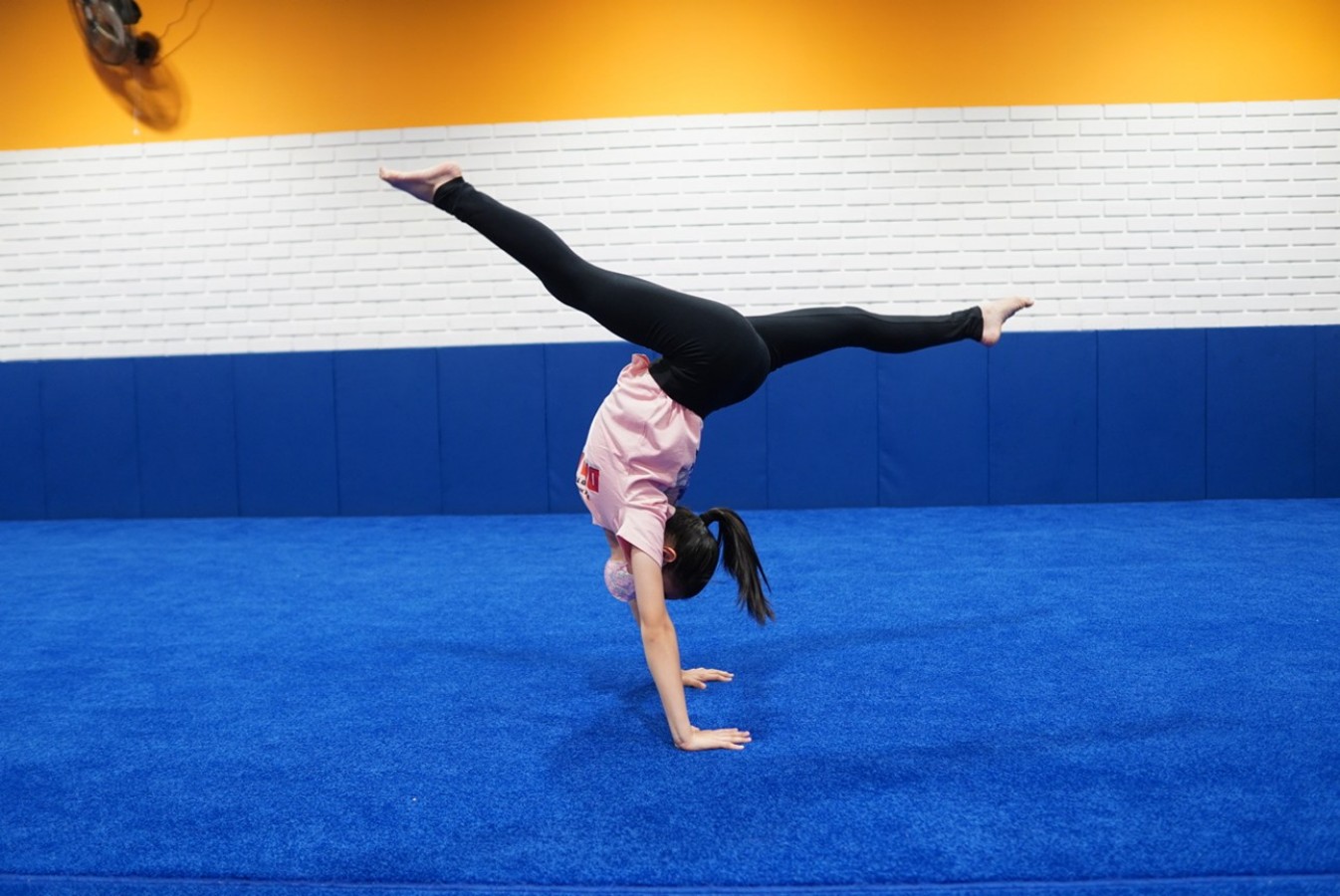Combat Side Stroke: The Ultimate Guide to Proper Form and Execution

If you’ve ever looked into military swim techniques, you’ve probably heard of the combat side stroke. This unique swimming style was developed by the U.S. Navy SEALs as an efficient way to move through the water while conserving energy and staying stealthy.
Unlike the traditional side stroke you might learn in swim class, the combat side stroke is perfect for long-distance swims in challenging conditions. In this guide, we’ll explore what the combat side stroke is, how it differs from the traditional side stroke, and how to master it yourself.
What Is the Combat Side Stroke and Its History
The Combat Side Stroke (CSS) is a special swimming technique created by the U.S. Navy SEALs. Think of it as a hybrid stroke that mixes the traditional side stroke, breaststroke, and freestyle. The result? A smooth, efficient, and stealthy way to move through the water.
It’s designed to save energy, reduce splash, and keep the swimmer less visible—perfect for situations like combat training, swimming in gear, or covering long distances.
The history of the CSS goes back to when the Navy SEALs needed a stroke that worked better than freestyle or the traditional side stroke. Freestyle was fast but created too much splash, while the old side stroke was energy-saving but too slow.
The solution was the Combat Side Stroke: a low-profile, powerful technique built for endurance. Over time, it became a core part of Navy SEAL training and now, swimmers outside the military are picking it up for fitness or even open-water swimming.
Combat Side Stroke vs. Traditional Side Stroke
While the combat side stroke (CSS) and traditional side stroke share the same foundation as part of the sidestroke swimming technique, they have key differences in purpose, speed, and execution. Here’s a breakdown of how they compare:
1. Purpose and Use
The traditional side stroke is often used for leisure swimming, lifesaving, or rescue scenarios. It’s designed for comfort and efficiency at a relaxed pace, making it perfect for conserving energy in casual situations.
The CSS, on the other hand, was created by military forces for tactical situations. It’s built for stealth, endurance, and long-distance swimming, making it ideal for covert missions or swimming while carrying extra gear.
2. Arm Movement
In the traditional stroke, the lead arm does most of the work by pulling through the water, while the trailing arm rests passively along the body. This makes the stroke simple and low-effort, but not as powerful.
The CSS actively uses both arms. The lead arm performs a strong sculling motion, while the trailing arm moves in a freestyle-like pull. This continuous arm motion creates constant propulsion and helps maintain momentum without slowing down.
3. Body Position
The body tends to stay slightly upright, which is comfortable but creates more drag in the water. This positioning works fine for short distances or relaxed swimming but is less efficient for speed or endurance.
The CSS keeps the swimmer in a flatter, more horizontal alignment. This streamlined position reduces drag, allowing the swimmer to move more efficiently while staying close to the surface.
4. Kick Mechanics
The kick is a gentle scissor motion mainly used to maintain balance. It’s not very powerful, but it’s comfortable and doesn’t require much energy.
The CSS uses a sharper, more forceful scissor kick that’s perfectly timed with the arm movements. This creates stronger bursts of propulsion, helping the swimmer cover long distances with less effort and greater speed.
How to Swim the Combat Side Stroke
The Combat Side Stroke (CSS) might look a little complex at first, but once you break it down step by step, it becomes much easier to follow. Here’s how to do it:
A. Body Position
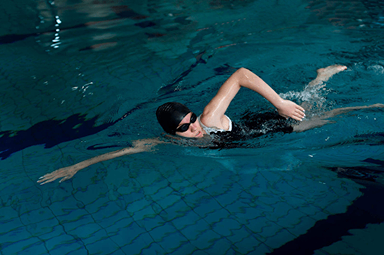
The CSS is all about staying streamlined and horizontal to reduce drag. Keep your body flat in the water as much as possible.
You’ll rotate to one side for breathing, then return to a face-down horizontal position. This rotation keeps the movement smooth and efficient while allowing you to breathe naturally.
B. Pull Arm (Top Arm)
.png)
Your pull arm (also called the top arm) starts the stroke. From a streamlined position, move this arm down into the water with a slight bend at the elbow and wrist.
Keep the arm close to your body as you pull down to hip level, then bring it back along your chest. Rotate your body toward the pulling side to add power, but keep most of your body beneath the surface for stealth and efficiency.
C. Lead Arm (Bottom Arm)
.png)
While your pull arm is recovering, the lead arm (bottom arm) takes over. Use a smooth sculling motion to pull water back toward your chest. When both arms are finishing their motions, they should meet in front of your face.
At this point, extend them forward into a streamlined position, completing the recovery phase and setting up for the next cycle.
D. Legs
The CSS uses three kicks to match the stroke phases:
- Dolphin Kick
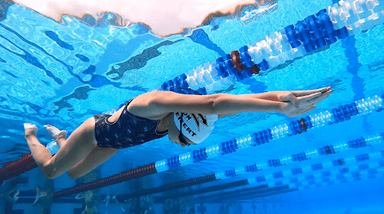
At the start of the cycle or after entering the water, keep your legs together and kick up and back, then down and forward to generate initial momentum.
- Scissor Kick
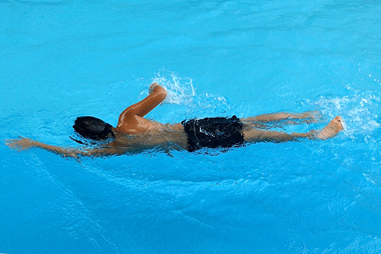
When your arms are recovering and meeting in front of your face, perform a scissor kick. Spread your legs apart in opposite directions, then sweep them back together with a powerful thrust to propel your body forward.
- Flutter Kick
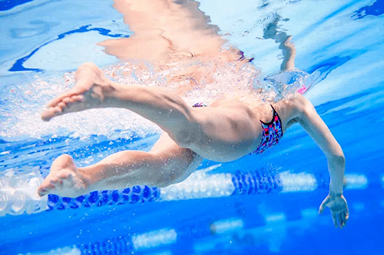
Between major kicks, use a gentle flutter kick to maintain steady propulsion. Keep your legs straight, point your toes, and alternate small, quick kicks.
Tips for Swimming the Combat Side Stroke
Once you’ve got the basic technique down, it’s time to refine your combat side stroke so it feels smoother, more efficient, and less tiring. The CSS is all about control, endurance, and smart movement but not rushing. Here are some simple tips to help you swim it better:
1. Keep Your Head Down
The key to the CSS is staying as horizontal and streamlined as possible. If you lift your head too high, your body position changes and it’ll feel like you’re swimming uphill, which wastes energy.
Keep your head low, turn to the side just enough to breathe, and let the water flow smoothly around you.
2. Take Your Time
Unlike competitive strokes, the CSS is about efficiency and endurance. Navy SEALs train to swim long distances, sometimes with heavy gear, so pacing is everything.
Focus on getting a full extension between each stroke cycle, and let yourself drift in the streamlined position for a few seconds. This helps conserve energy and keeps your movement smooth.
3. Stay Below the Surface
One of the most important parts of the CSS is keeping your arms, legs, and even your head just below the surface.
In combat, this helps with stealth, but for regular swimmers, it also improves efficiency.
Staying slightly submerged reduces drag, prevents splash, and makes your stroke smoother.
See How Efficient Your Swimming Can be!
Now that you’ve got the full scoop on the combat side stroke, you can see why it’s considered a go-to swimming style for tactical and long-distance swimming. Tired of boring pool sessions that feel like you’re just splashing around?
At Rockstar Academy’s Swimming Program, we turn water time into wow time. Whether you’re just learning how to float or already racing like a champ, this isn’t your average swim school.
As part of our epic Sports & Performing Arts Academy, we train swimmers to be confident, strong, and RockOlympics-ready. The RockOlympics is our very own high-energy championship event where students get to compete just like in the real Olympics—complete with friendly rivalries, cheering crowds, and that electrifying race-day atmosphere.
It’s a chance for young athletes to push their limits, showcase their hard-earned skills, and feel the heart-pounding thrill of going for gold. Still not sure? No worries, dive in for a free trial class and feel the Rockstar energy for yourself!
FAQ
What is the combat side stroke?
A swimming technique created by Navy SEALs for efficient, stealthy, long-distance swimming.
What is the difference between sidestroke and combat side stroke?
The combat side stroke is faster, more streamlined, and uses both arms actively, unlike the more relaxed traditional sidestroke.

